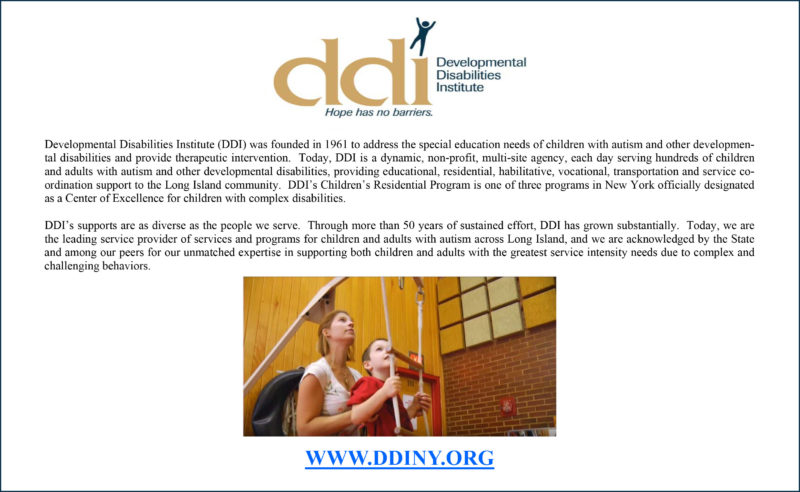There are currently 492 children living in 12 Children’s Residential Programs (CRPs) in New York State. Children who live in residential placements often present with complex learning and behavioral profiles that require highly individualized care and support. Children with severe and complex autism experience difficulty in learning self-care and communication skills and are more vulnerable to a number of co-occurring medical and psychiatric conditions that make their care intensive, restrictive, and costly. Recently, New York State’s Office for People with Developmental Disabilities (OPWDD) asked the following questions: what are the best ways we support children with complex autism in residential care? What are the various psychiatric, medical, and wellness profiles they are likely to have? What ways can we improve service delivery to ensure cost-effectiveness and optimal outcomes for these most vulnerable children?

Rebecca Girard, MSW, LCSW
To begin answering these important questions, a partnership was made possible through an award of federal Balancing Incentive Program (BIP) funding administered through OPWDD, in coordination with the New York State Education Department and the New York State Department of Health to create three Centers of Excellence. The Children’s Residential Programs (CRPs) at the Center for Discovery, Upstate Cerebral Palsy, and Developmental Disabilities Institute, in coordination with Cerebral Palsy Associations of NYS, are engaged in a collective effort to identify best practices, develop new treatments and intervention strategies, and create infrastructure that will improve the quality and efficiency of care for children with autism and various complex needs. This includes several goals to define more effective and efficient supports for children and their providers in six key areas:
- Create a centralized data repository
- Identify best practices and quality of care models
- Conduct applied research
- Propose a value-based payment methodology
- Establish a continuum of care and capacity building
- Initiate a training and education program
Centralized Data Repository
The COEs are developing an interactive, web-based data repository to improve information gathering and sharing with federal, state, and local agencies in an effort to provide more timely and cost effective approaches to care. Upon completion, this data repository has the capacity to gather data relevant to the CRPs, clinicians, and others in the care and support of those with autism spectrum disorders and complex disabilities. The COEs are working to gather demographic, health, behavioral, and cost data, which will provide invaluable information for better understanding complexity, identifying supports and services, and cost of care. In addition, the COEs have begun work with Department of Health to review and capture all the costs associated with the care of children in CRPs in the data repository, with the primary goal of developing of a new model for reimbursement for the CRPs in New York State.
Best Practices and Quality Care
Autism spectrum disorder, by definition, is a disorder with a wide-range of expression and no two children experience autism the same way. When a child is diagnosed with autism families and providers can expect an increased possibility of co-occurring medical and psychiatric conditions (Mannion, Leader & Healy, 2013) as well as additional challenges to the maintenance of overall wellness and independence. The children who live in residential placements frequently present a number of challenging behaviors such as aggression, self-injury, irritability, and hyperactivity, for examples. The COEs are particularly interested in how the presence of unacknowledged medical and psychiatric comorbidities may contribute to severe and challenging behaviors for children with limited cognitive and language abilities living in our care.
Children with limited verbal skills and challenging behaviors have historically been understudied, and many co-occurring conditions go unacknowledged and untreated. Medical problems such as gastro-intestinal issues (McElhanon, McCracken, Karpen & Sharp, 2014), sleep disturbance (Mazurek & Sohl, 2016), eating and feeding problems (Johnson, Turner, Steward, Schmidt, Shui, Macklin, Reynolds, James, Johnson, Manning & Hyman, 2014), and obesity (Presmanes Hill, Zuckerman & Frombonne, 2015) are commonly associated with ASD. Common co-occurring psychiatric conditions include anxiety (White et al, 2009), AD/HD (Gadow & DeVincent, 2005, Lundstrom et al, 2015), Post-Traumatic Stress Disorder (Mehtar & Mukaddes, 2011), and depression (Simonoff et al, 2008).
Proper treatment begins with acknowledgment and accurate diagnosis. Children who are experiencing serious behavior challenges may also be experiencing undiagnosed medical or mental health conditions that need specialized treatment separate from interventions for autism and developmental disabilities alone. Research is being conducted at all three COE sites to develop valid and reliable screening instruments that will detect various symptoms in children who are unable to self-report. The use of sensitive screening can expedite proper treatment and prevent conditions from worsening over time.
There has also been extensive work on a comparing individual intervention models, exploring literature on evidence-based practices (including a systematic review of the literature), and identifying a group of common practices that are utilized across all three centers. These practices will be shared statewide as a comprehensive clinical Resource Guide.
Education and Training Program
Information sharing and education of COE activities is essential as we hope to provide useful strategies and information to all agencies in New York State working with this population. Four, 30 minute online training modules are being developed to educate families, providers, and professionals to be made available free on OPWDD’s website. Modules include:
- Medical Issues in Autism Spectrum Disorder
- Autism and Co-occurring Psychiatric Conditions
- General Wellness
- Family Partnerships
The COEs have also utilized telemedicine technologies to interface with leading medical providers in the field and enhance the dissemination of cutting edge information regarding treatment protocol and best practice. The Centers of Excellence have utilized HIPAA-compliant cloud-based video conferencing to facilitate consultations, observe treatment techniques, demonstrate aspects of research projects, and provide training and education opportunities.
Two conferences will be held to discuss the latest research, epidemiology, and treatment of comorbid psychiatric disorders and ASD: May 19th at New York Academy of Medicine and June 7th at Stony Brook University.
Continuum of Care and Capacity Building
The Centers of Excellence have been assessing current discharge practices, identifying opportunities for improvement in efficiency, and developing a comprehensive discharge-planning model. This includes developing discharge planning timelines that capture the steps needed for a child to age out at each of the COEs as well as identifying the challenges that hinder the aging out and discharge planning process. The data repository, once complete, will provide data to support COEs recommendations for a best practice model for discharge planning.
In Summary
All children deserve access to quality care and providers who understand their needs holistically, as the many facets of their care are intimately interconnected and only meaningful in reference to a child’s whole self and lifestyle. Children deserve to have access to effective, accurate, and evidence-based treatments. The establishment of the Centers of Excellence in New York State is an ambitious initiative to improve care for children with autism spectrum and severe or challenging behaviors by better understanding co-occurring medical and psychiatric conditions and their impact on health and wellness outcomes, specifically through the reduction of challenging behaviors which may prevent children from learning, making friends, or living their best possible lives. The Center for Discovery, Upstate Cerebral Palsy, and Developmental Disabilities Institute hope to continue this work by being leading providers and sharing knowledge and resources through the implementation of best practices, engagement in research, training and education, and seamless lifetime transitions that provide fulfillment and positive relationships for the people we serve.
To learn more about the Center of Excellence at the Developmental Disabilities Institute, visit www.ddiny.org, e-mail rebecca.girard@ddiny.org or call 631-366-2947. This article was prepared by Rebecca Girard in her capacity as an employee of DDI. The opinions expressed in this article are the author’s own and do not necessarily represent the opinions, interpretations or policies of New York State or the Federal Government of the United States.
References
Gadow, K.D., & DeVincent, C.J. (2005) Clinical significance of tics and attention-deficit hyperactivity disorder (ADHD) in children with pervasive developmental disorder. Journal of Child Neurology. 20:481-488.
Johnson, C.R., Turner, K., Steward, P.A., Schmidt, B., Shui, A., Macklin, E., Reynolds, A., James, J., Johnson, S.L., Manning Courtney, P., & Hyman, S.L. (2014) Relationships between feeding problems, behavioral characteristics, and nutritional quality in children with ASD. Journal of Autism and Developmental Disorders 44 2175-2184.
Mannion, A., Leader, G., & Healy, O. (2013). An investigation of comorbid psychological disorders, sleep problems, gastrointestinal symptoms and epilepsy in children and adolescents with autism spectrum disorder Research in Autism Spectrum Disorders 7(1):35-42.
Mazurek, M.O., & Sohl, K. Sleep and Behavioral problems in children with autism spectrum disorder. Journal of Autism and Developmental Disorders. (2016) 46: 1906-1915.
McElhanon, B.O., McCracken, C., Karpen, S., & Sharp, W.G (2014) Gastrointestinal symptoms in autism spectrum disorders: A meta-analysis. Pediatrics. 133(5) 872-883.
Presmanes Hill, A., Zuckerman, K.E., & Frombonne, E. (2015) Obesity and autism. Pediatrics. 136 1051-1061.
White S.W., Oswald D., Ollendick T., & Scahill L. (2009) Anxiety in children and adolescents with autism spectrum disorders. Clinical Psychology Review. 29(3):216-29






